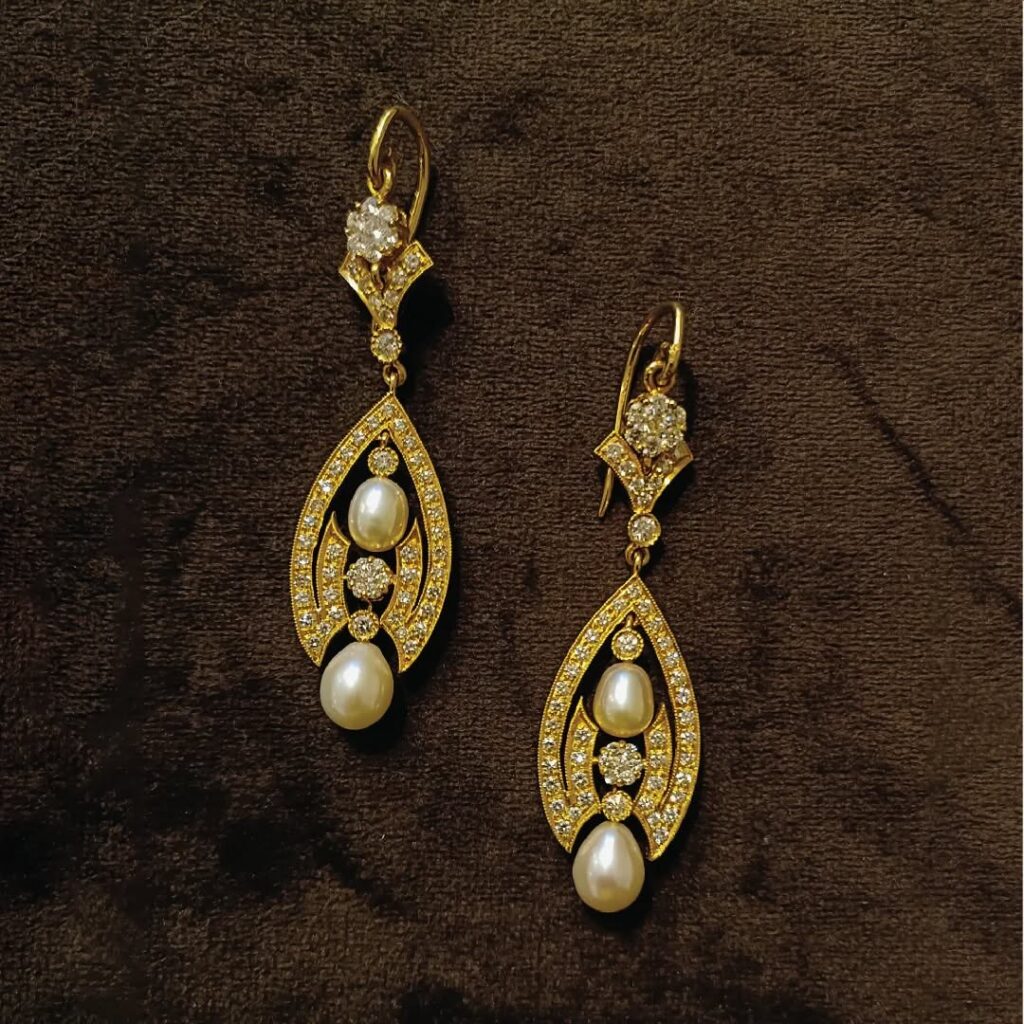India’s royal jewellery tradition is being carried on by Polki and Jadau pieces of jewellery. These two are not only ornaments but living stories of royalty, captured in gold and stone. While Polki celebrates the refined beauty of an uncut diamond, Jadau represents the masterful hand setting of gems, gold, and enamel.
Previously worn by royal families, Maharajas and Maharanis, you can now find Polki and Jadau jewellery pieces being worn at weddings and festivals. If you’re shopping for bridal sets or looking for festive adornments, investing in the right type of Polki and Jadau jewellery will make you look royal.
Here’s a practical guide to what each style offers and how to make informed purchasing decisions.
What are Polki and Jadau?
If you decide to buy Polki, you will receive uncut, natural diamonds in their raw form in every piece of jewellery. These stones retain the original crystal face and are valued for soft, unique, and royal sparkle. The best part of Polki is that they are not engineered like the other types of jewellery pieces; rather, they are made with uncut diamonds, and each piece is intricately curved. Polki jewellery often uses traditional settings such as Kundan or Jadau.

Jadau, on the other hand, showcases the story of royal craftsmanship techniques, which were noted in Rajasthan and Gujarat. Jadau jewellery pieces feature Polki, Rubies, and emeralds embedded on a gold base. Unlike Polki, Jadau pieces are made with machines to incorporate gems into the gold base. Jadau pieces often feature intricate meenakari (enamel) work on the reverse, intricate gold work, and a three-dimensional, sculptural appearance.
Key differences at a glance
If you’re a first-time buyer, distinguishing between Polki and Jadau can be challenging. However, at first glance, the visible difference you will notice is the hand-setting method used for Polki jewellery pieces. The uncut diamond on the jewellery piece is a sign that it is one of the finest Polki pieces. On the other hand, Jadau is opulent, colourful, and ornate.
Both pieces are heavier than the contemporary jewellery piece due to the inclusion of gemstones and intricate craftsmanship.
How to evaluate authenticity?
Buyers are often tense about the authenticity of the jewellery pieces. Hence, it is advised by all major jewellery shops that as a customer, they should ask for proper documentation, which includes a request for provenance or lab reports if available (Polki are rarely GIA-graded like modern diamonds, but reputable houses provide testing certificates).
For checking the quality of the gold, checking the official hallmark is essential. Pure Jadau often uses high-carat gold as a base. As a responsible buyer, you should verify the karat and weight before making a purchase.
Inspecting the craftsmanship is also essential when buying authentic pieces of jewellery. Jadau pieces show clean meenakari on the reverse side. If you find a jewellery piece with loose prongs or excessive glue on the reverse side, it is a red flag and a suggestion that the piece may not be genuine Jadau jewellery.
Buy from trusted artisans or jewellery brands like Bhuramal Rajmal Surana Johuree, established since 1735. Surana Jewellers, with its roots deeply embedded in Jaipur’s cultural tapestry, excels in crafting Polki and Jadau jewellery sets that reflect the essence of traditional aesthetics combined with a touch of modern sophistication.
